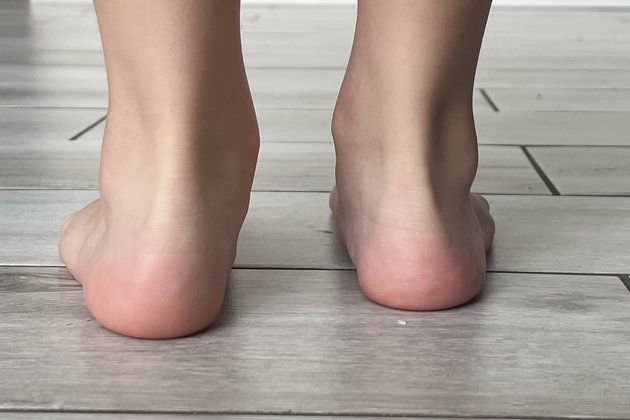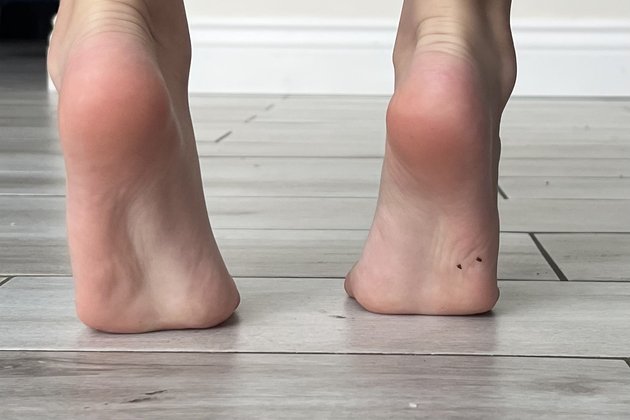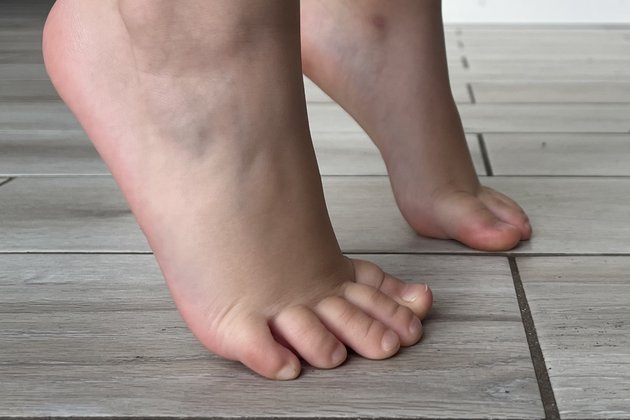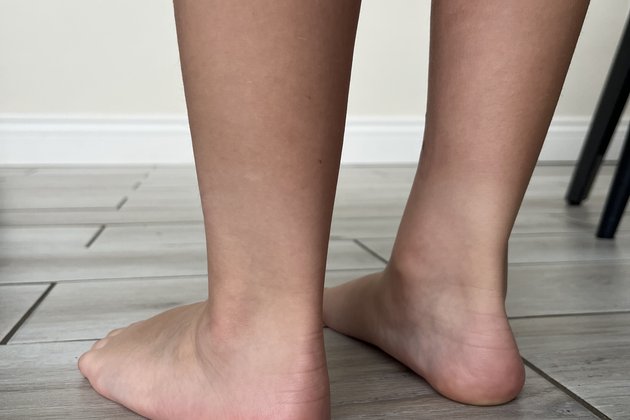Flat feet in children
A flat foot happens when the arches (curved part) on the inside of your child’s feet are not visible when they stand. This often makes the heels tilt slightly outward. Many children have flat feet, and in most cases, it is completely normal and causes no problems.
What is flexible flat foot?
Flexible flat foot is the most common type of flat feet in children.
- When your child stands, the arch of the foot looks flat and the heel points outwards.
- When your child stands on tiptoes, the arch comes back and the heel straightens up.
This means the foot is “flexible” and still works as it should.
Flexible flatfeet are common in young children because their joints and ligaments are still soft and flexible.
- About 90% of 1-year-olds have flat feet.
- The arch usually develops by the age of 10.
- Some adults continue to have flat feet and still have no problems.
When is treatment needed for flexible flat feet?
In most cases, no treatment is necessary. However, some children may complain of:
- Pain in the arch or ankle when walking or standing for long periods.
- Tightness in the back of the lower leg (Achilles tendon).
If symptoms occur, the following may help:
Reassurance: this is a normal part of growing up for most children.
Stretching exercises: usually help if the Achilles tendon is tight. You can find stretches for a tight Achilles tendon online, or you can visit a physiotherapist.
Arch supports: These can help if your child has pain in the arch when standing or walking. Arch supports do not change the shape of the foot or prevent future problems; they are simply for comfort.
For GPs: Referral Recommendations
Most flexible flat feet do not cause problems.
However, in the following cases, a child may need to be referred to an orthopaedic specialist.
- The foot remains flat even when the child is standing on tiptoes (could suggest a stiff or “rigid” flatfoot).
- The child has regular ankle pain or frequent sprains.
- There is ongoing pain despite using arch supports and doing stretches.
- There is pain during sports, or tenderness on the inner side of the foot.
- The child has aching limbs at night. This may relate to Vitamin D levels.
Summary
Flexible flat feet are common and normal in children.
- Most do not need treatment unless they are causing discomfort.
- If needed, use simple stretches and arch supports for relief.
- If there is a rigid flatfoot or ongoing symptoms despite treatment with arch supports, then the child should be referred for orthopaedic assessment.





